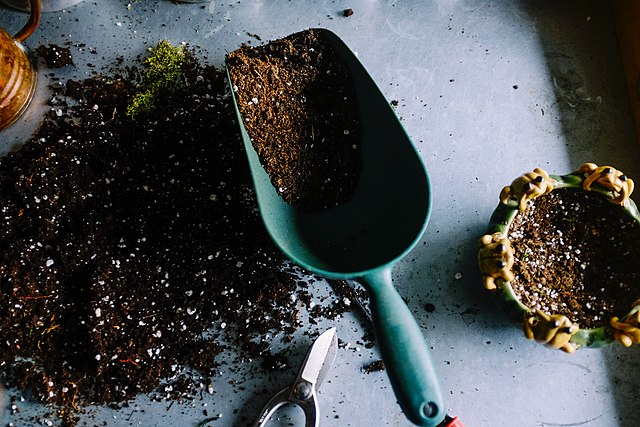Can I use seed starting mix as potting soil?
Is it safe to use seed starting mix as potting soil or isn’t ideal for growing plants to maturity? You’ll find the answer to this question in this article.
Growing plants from seeds may be a challenging task for some because there are multiple things that can go wrong. Firstly, the quality of the seeds and how they were kept after harvesting, and secondly, how they are cared for after sowing.
Once planted in the ground, the seeds need special care in the first part of their development, so they can germinate quickly and produce healthy plants.
To do this successfully, it is necessary to create an environment as favorable as possible for seed germination and further development of the new plant. This includes providing an optimal temperature for germination, soil that maintains the proper humidity and density, oxygen, as well as an environment free from diseases and pests.
And that’s the reason why seed-starting mixes have been created.
What is a seed starting mix?
The seed starting mixes are products advertised to be ideal for the faster and healthier growth of plants from seeds. In addition, some manufacturers claim that their products are also excellent for growing plants from cuttings.
Mainly, these products focus on helping the plant in the first part of its life, starting from the seed to the seedling stage.

In the composition of these mixes, there are usually combined elements meant to facilitate the maintenance of a humidity level that favors the germination of the seeds, supply a good density of the soil, prevent its compaction, as well as ingredients that encourage the development of the plant’s roots subsequently.
After analyzing several such products available on the market, here is a list of common elements included in seed starting mixes:
- Coconut coir
- Yucca extract
- Mycorrhizae
- Dolomitic limestone
- Sphagnum peat moss
- Vermiculite
- Perlite
- Peat humus
As you can probably tell, most of these ingredients are also present in the regular mixes for mature potted plants.
To help you understand the role of each of these components, we will say a few words about them.
Coconut coir is a very common element in potting mixes and acts primarily as a growing media that replaces the actual soil. It also provides additional benefits like good water retention and drainage, gives the mix a good density, and does not modify the pH of the soil like peat moss, which is one of its most commonly used alternatives. Thus, no other pH balancers are needed to neutralize the acidity of the soil.
Yucca extract is a natural wetting agent produced from the Mojave yucca (Yucca schidigera). In potting mixes, this extract regulates the pH of the soil, prevents its compaction, and improves its permeability by allowing the water to penetrate deeper into the growing medium.
Mycorrhizae is the name of a symbiotic association between a fungus and the roots of a plant. Beneficial fungi attach to the roots of plants and form a mutually advantageous connection. The plants provide carbohydrates (sugars) for the fungi and in return, they enhance the mineral absorption capabilities of the plants and help them to absorb more water and minerals from the soil.
Dolomitic limestone is a mineral rock with a primary role in balancing the soil’s pH level by neutralizing acids. Additionally, it supplies magnesium and calcium to the plants.
Sphagnum peat moss, or peat moss, is decayed plant matter from mosses in the genus Sphagnum. It is very often used as a growing media both in the seed starting mixes but also in regular potting mixes. Additionally, it is known for its capacity to retain good amounts of water and nutrients and prevents soil compaction.
Vermiculite is a mineral used in many potting soils and mixes. It is valued mostly for its attributes that contribute to soil aeration, water retention and prevent nutrient leakage.
Perlite is a volcanic porous mineral rock, very popular in potting mediums due to its properties that improve the quality of the mix. It is beneficial in preventing soil compression, improves both water retention and drainage, aerates the soil, and even catches nutrients.
Peat humus is a highly decomposed material from mosses in the genus Sphagnum. It is usually utilized as a conditioner for improving soil fertility.
Now that we know more about the most common elements included in seed starting mixes, we should be able to answer the main question.
Can you use seed starting mix as potting soil?

Most of the ingredients in the seed starting mixes are also found in the mediums created for the growth of adult plants. Thus, you might think that there should be no problems in using these mixtures for growing any plants.
Yet, these seeding starting mixes do not contain fertilizers, which are essential to delivering the needed nutrients to a plant for harmonious growth.
Why are there no fertilizers in seed-starting mixes?
Because these products are intended for use only in the first part of the plant’s life, from the seed stage to the seedling stage.
In that initial stage, nutrients are still provided by the seed until the plant reaches the seedling phase and grows the first few leaves.
So if you’d choose not to transplant the seedlings and use a seed starting mix as a growing medium for adult plants, most likely, because of the lack of enough nutrients in the soil, the growth of the plants would be slowed down to the point where the plants would develop various issues or even die.
If you’d add fertilizer to these mixes after the plants reach the leaf growth phase, they would probably develop normally even in these mixes intended for seed germination. However, we recommend that you move the plants into other mediums once they reach a certain age and use a potting mix intended for the growth of adult plants.

